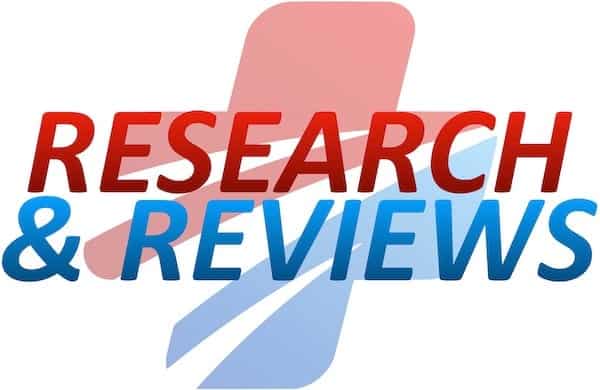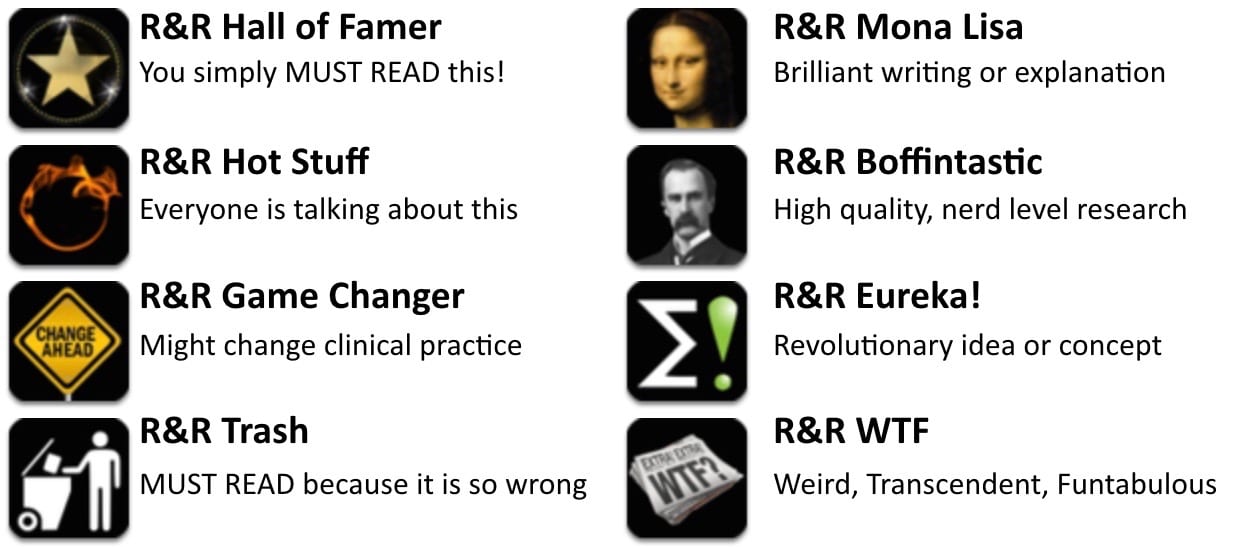R&R In The FASTLANE 056
Welcome to the 56th edition of Research and Reviews in the Fastlane. R&R in the Fastlane is a free resource that harnesses the power of social media to allow some of the best and brightest emergency medicine and critical care clinicians from all over the world tell us what they think is worth reading from the published literature.
This edition contains 10 recommended reads. The R&R Editorial Team includes Jeremy Fried, Nudrat Rashid, Soren Rudolph, Anand Swaminathan and, of course, Chris Nickson. Find more R&R in the Fastlane reviews in the : Overview; Archives and Contributors
This Edition’s R&R Hall of Famer
Jefferson T et al. Oseltamivir for influenza in adults and children: systematic review of clinical study reports and summary of regulatory comments. BMJ 2014. PMID: 24811411
- It is coming up to flu season in the northern hemisphere. What is the best evidence on the use of the antiviral agent oseltamivir (Tamiflu)? Not good according to this Cochrane review. Reduced symptoms by less than a day with NNT=100 and NNH (Harm) =28.
- EM docs need only look at the page 18 which gives a visual representation of the bias in the included studies. Green good, red bad. It is a sea of red with about 2/3 being RED. Not exactly unbiased studies.
- “The issue of mode of action, lack of sizeable benefits, and toxicity are of concern”
- “published evidence base that has been affected by reporting bias, ghost authorship, and poor methods”
- “reasons to question the stockpiling of oseltamivir, its inclusion on the WHO list of essential drugs , and its use in clinical practice as an anti-influenza drug”
- Jefferson T et al. Oseltamivir for influenza in adults and children: systematic review of clinical study reports and summary of regulatory comments. BMJ 2014. PMID: 24811411
- Recommended by Recommend by Ken Milne
- Read More: Neuraminidase Inhibitors for Influenza: The Truth, The Whole Truth and Nothing But the Truth . . . Finally (Anand Swaminathan)
Robertson CS et al. Effect of Erythropoietin and Transfusion Threshold on Neurological Recovery After Traumatic Brain Injury. JAMA 2014; 12(1): 36-47. PMID 25058216
- Just as in sepsis with the TRISS trial, higher hemoglobin targets and transfusion thresholds don’t seem to benefit patients with traumatic brain injury. In this randomized (but only partially blinded) trial, the investigators compared giving EPO and transfusing for any hemoglobin < 10 g/dl versus placebo and a lower (< 7 g/dl) hemoglobin transfusion threshold. They found no statistically significant difference in the primary endpoint (Glasgow Outcome Scale) or the important secondary outcome of mortality.
- Recommended by Anand Swaminathan
Lindenauer PK et al. Attitudes of Hospital Leaders Toward Publicly Reported Measures of Health Care Quality. JAMA Intern Med. 2014 PMID 25286316
- An interesting insight into how Hospital Leaders think. Public reporting was thought to improve quality improvement activities in their institution.
- Recommended by Nudrat Rashid
De bruyne B et al. Fractional flow reserve-guided PCI for stable coronary artery disease. NEJM 2014; 71(13): 1208-17. PMID 25176289
- The 2-year follow up data from the FAME-2 cohort. Consistent with the original publication, the only benefit demonstrated by FFR-guided PCI over medical management was in the number of “urgent revascularizations observed. Probably more of a commentary on our own biases rather than a statement on the efficacy of FFR.
- Recommended by Rory Spiegel
- Read More: The Case of the Anatomic Heart (Rory Spiegel)
Edwards MR, Mythen MG. Fluid therapy in critical illness. Extrem Physiol Med. 2014; 3:16. PMID 25276346
- A great summary of the current issues in Fluid Therapy. Not only issues current in FOAMed, but some I never even thought about.
- Recommeded by Mike Jasumback
Humphreys I et al. Nasal packing with strips of cured pork as treatment for uncontrollable epistaxis in a patient with Glanzmann thrombasthenia. Ann Otol Rhinol Laryngol. 2011; 120(11): 732–6. PMID 22224315
- Management of epistaxis can be challenging specially in somebody with bleeding disorders. This paper, although funny in appearance, describes the use of bacon to stop a life-threatening epistaxis in a kid when several regular anterior packings failed. The rationale is based in the use of “salt pork” (sodium nitrate) to induce massive swelling and coagulation on the bleeding tissue and acting as a biological packing.
- Recommended by Daniel Cabrera
Ioannidis JP. How to Make More Published Research True. PLoS Med. 2014 Oct 21;11(10): PMID 25334033
- JohnIoannidis has published extensively on how and why much of research is wrong. This article offers solutions in which he calls for a shift in the research mentality. The pearls:
- Focus on replication of research findings (and reward this)
- Broad collaboration and data sharing
- Altering the reward system for publication and academic advancement (i.e. reward not the number of publications but their impact; focus on the quality of peer review)
- Recommended by Lauren Westafer
BET 2: Current evidence does support the use of a negative D-dimer to rule out suspected pulmonary embolism in pregnancy. Emerg Med J. 2014; 31(11): 946-7. PMID 25326500
- A short cut review looking at the use of D dimer in pregnant patients to rule out pulmonary embolism. In the words of the authors “The clinical bottom line was that a negative D-dimer result was considered sensitive enough to rule out pulmonary embolism in patients who were in the first two trimesters of pregnancy but that the false positive rate was so high as to render the test useless in patients in the third trimester if standard cut-off values were used.”
- Recommended by Jeremy Fried
Boué Y et al. Survival after avalanche-induced cardiac arrest. Resuscitation. 2014; 85(9): 1192-6. PMID: 24971508
- Similar to the study in the same volume of Resuscitation, these authors found that the K level for survivors was <4.3 mmol/L. That’s two papers with markedly lower than the standard <12 mmol/L of potassium that we currently use as a cutoff to cease resuscitation.
- Recommended by Justin Hensley
Smekal D et al. CPR-related injuries after manual or mechanical chest compressions with the LUCAS™ device: A multicentre study of victims after unsuccessful resuscitation. Resuscitation 2014. PMID 25277343
- There are many enthusiasts for mechanical CPR despite the absence of evidence of benefit over manual CPR. This article is a retrospective review of failed cardiac arrest resuscitations looking at the rate of intrathoracic injury after manual or mechanical CPR. Mechanical CPR was associated with a higher rate of injuries but the significance of these is unclear. For now, this adds to the literature arguing against the widespread application (and cost associated with it) of mechanical CPR.
- Recommended by Ryan Radecki
- Read More: CPR: Crushing it with Machines (Ryan Radecki)
Senior Consultant Anesthesiologist, Traumemanager and PHEM doctor. Dedicated to trauma resuscitation, prehospital care and airway management. Barometerbarn | @SorenRudolph |








